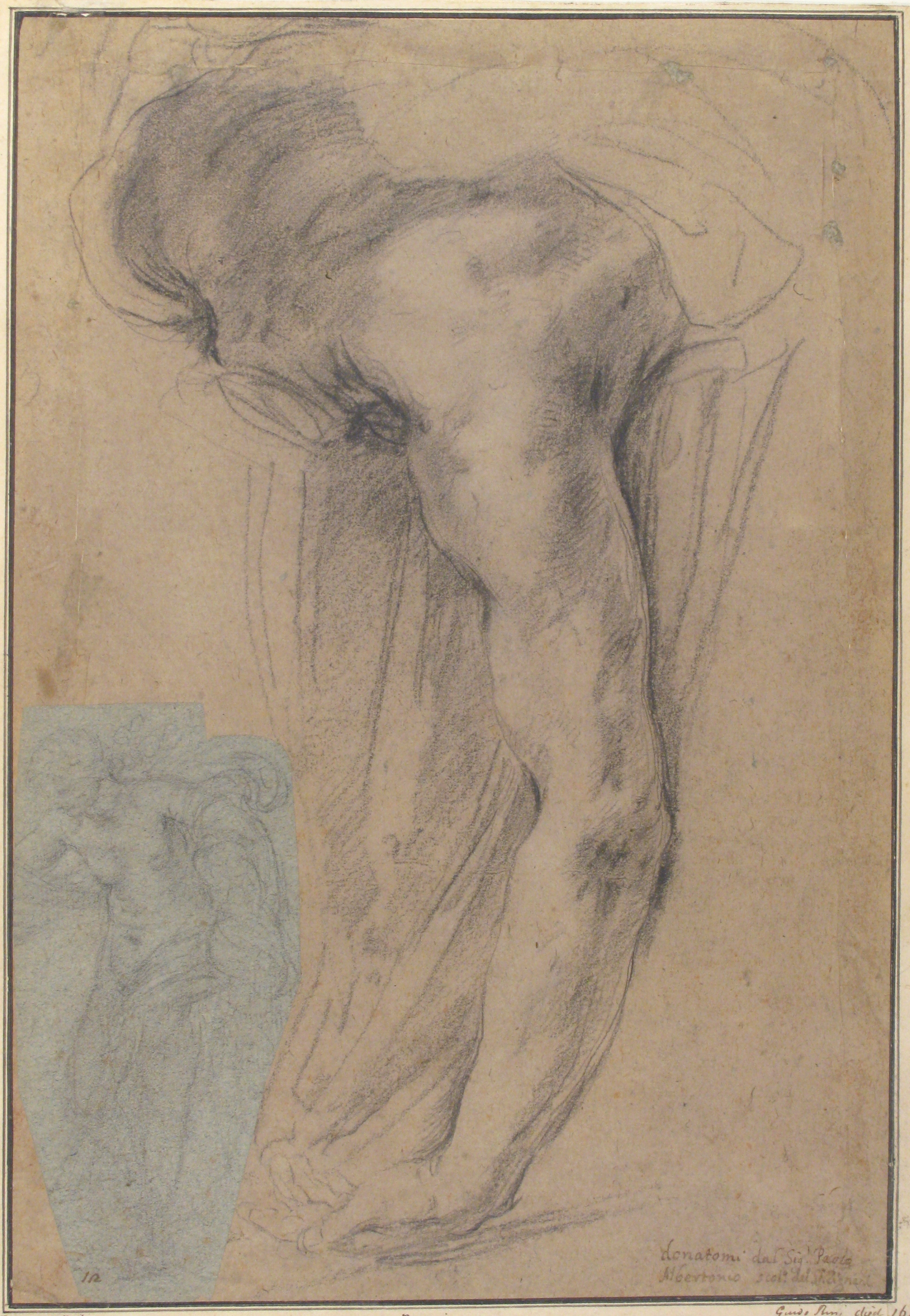The Reclining Headless Body of Holofernes; Study of Female Semi-Nude Figure (on a small separate, unrelated sheet of blue paper, pasted onto the lower left of the large sheet)
Guido Reni Italian
Not on view
This large sheet contains a study, probably drawn from life, for the left arm and shoulder of the headless body of Holofernes in a painted canvas portraying Judith and Holofernes executed by Reni in the mid-1620's. The Metropolitan Museum owns three reproductive engravings after this composition (nos. 51.501.4564; 51.501.4574; and 51.501.5060), and moreover, an exquisite study for the head of the Old Testament heroine (no.1992.70), which was formerly from the collection of the Earls of Leicester at Holkham Hall.
The delicately drawn study of a half-draped female figure at lower left, also by Guido Reni, is a separate sketch that has been pasted by a collector, most likely Sebastiano Resta (see Warwick 2000) onto the larger sheet containing the drawing of Holofernes's body. The style and technique seem more typical of Reni's drawings of about a decade later, around 1635-40 (see especially Uffizi 12452 F, Florence), and the design generally relates, in mirror image, to the poses of Andromeda in the versions of the painted composition of 1635-36 in the Galleria Pallavicini, Rome, and that formerly with Colnaghi's, London (see Bibliography and Pepper 1988).
(Carmen C. Bambach, June 4, 2004, revised 2014)
Due to rights restrictions, this image cannot be enlarged, viewed at full screen, or downloaded.
This artwork is meant to be viewed from right to left. Scroll left to view more.




